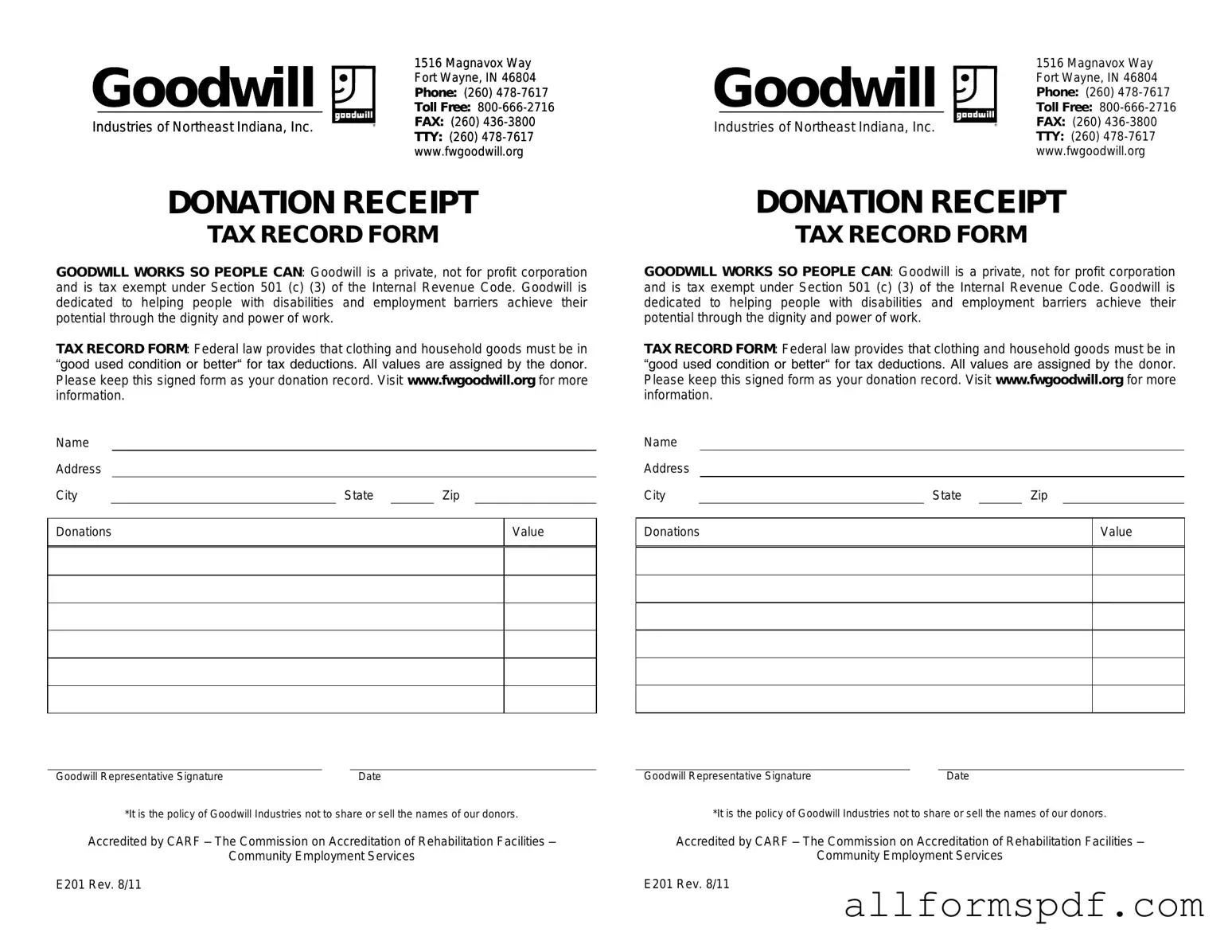When donating items to Goodwill, many people rely on the donation receipt form to document their contributions for tax purposes. However, mistakes can occur during this process, leading to potential issues later on. One common mistake is failing to provide a complete description of the items donated. Without a clear and detailed list, it becomes challenging to establish the value of the donation, which could raise questions during tax filing.
Another frequent error is neglecting to assign a fair market value to the donated items. Many donors underestimate the importance of this step. It’s essential to research and determine what similar items are selling for in the market. This ensures that the value claimed on tax returns is accurate and justifiable. Misvaluing donations can lead to complications if the IRS decides to scrutinize the claim.
Additionally, some individuals forget to date the receipt. A date is crucial for record-keeping and tax purposes. Without it, the donation may not be considered valid for the tax year in which it was made. This oversight can result in missed deductions and potential financial loss.
People often overlook the need for a signature on the receipt. While it may seem trivial, signing the form confirms the authenticity of the donation. A signature serves as a personal acknowledgment of the items given, which can be vital if there are any disputes regarding the donation.
Another common mistake is not keeping a copy of the receipt for personal records. After donating, it’s important to retain a copy of the receipt for future reference. This can be particularly useful if the IRS requests documentation or if there is a need to verify the donation later on.
Lastly, some donors fail to check the receipt for accuracy before leaving the donation center. Simple errors, such as misspellings or incorrect values, can lead to confusion down the line. Taking a moment to review the information ensures that everything is correct and complete, making the donation process smoother and more efficient.
